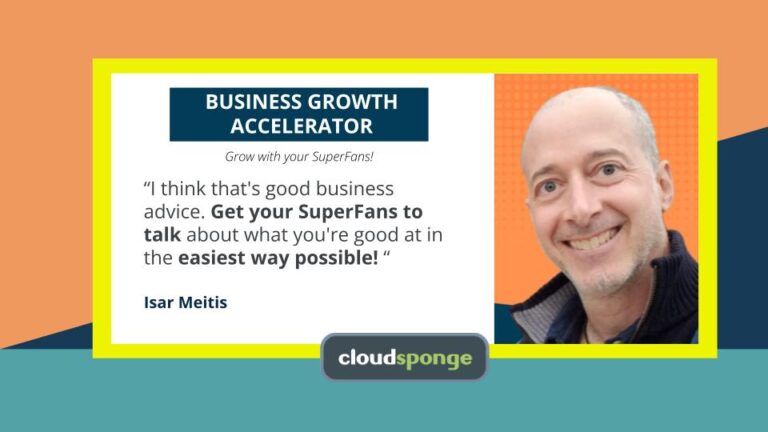Let’s face it; no other marketing channel could ever beat the results a well-conceived viral strategy can deliver.
Because when people tell others about a product, they do more than just inspiring new customers to try it out…
…they fuel your growth engine.
And at almost no cost for you at that.
In fact, when you look at the most revered products today – Dropbox or Intercom, for example – you’ll find virality at the core of their phenomenal initial growth.
But here’s the problem. Virality isn’t something you can just add to a product as an afterthought.
As Andrew Chen points out:
Virality is a business design problem, not a marketing or engineering effort.
To succeed with it, you must embed it into your product deeply. Hell, you should go even further and make it an integral part of the overall user experience.
In this guide, we’re going to show you how to do it.
What you’re going to learn:
- The definition of virality.
- What causes virality.
- What product virality is.
- How to calculate virality.
- Ways companies achieve product virality.
- The characteristics of a viral product.
- How some brands have built virality into their products.
- The four factors you must consider when designing viral products, and
- The four elements that make virality work.
Skip the queue and empower your customers to share about you,
Find out how with The Better Sharing Workbook!
What is Virality?
At its core, virality is a term used by digital marketers to describe something that takes off and goes viral. It also goes by the name viral marketing.
If something goes viral, viewers look at it a lot, sometimes share it with their friends, and then those friends share it with their friends.
It’s a bit like a cold or the flu; it can quickly spread from person to person without much effort.
Speaking of the cold or the flu, TikTok’s Nyquil sleepy chicken challenge is, for better or worse, an example of some unintended virality. According to the US Food and Drug Administration (US FDA), you shouldn’t cook chicken in Nyquil because it’s dangerous.
Well, guess what? The FDA bringing attention to the gross-out video only made more people want to see it. “NyQuil chicken” trended on Twitter with thousands of people posting a new tweet about it every hour. And, as we all know, seeing is believing (or in this case, vomiting). Strangely enough, if NyQuil or the chicken industry initiated this campaign, they might have had a viral product on their hands. But, on the other hand, they still may have rode the wave of a bump in sales; who knows?
But we’re getting off track. Let’s get back to what virality is, and more importantly, how you can use it to your advantage.
What Causes Virality?
A few key things must come together to make something go viral.
It needs to be:
- Infectious: There has to be some sort of initial reaction or curiosity that gets people interested in the first place. If it doesn’t, no one’s going to watch it, let alone share it.
- Valuable: Once people start watching or using the product, they need to get value from it. If they don’t, they won’t bother sharing it with others.
- Simple: The simpler something is, the easier it is for people to understand and use. And if it’s easy to use, people are more likely to share it.
- Sticky: The more people use a product, the more value they get from it. And the more value they get, the more likely they are to stick with it and share it with others.
These are just a few of the things that need to come together to make something go viral. But there’s one more important thing to consider: timing.
Timing is everything when it comes to virality. If you’re too early, no one will care. If you’re too late, everyone will already be using the product and there won’t be anything new or exciting about it.
You need to find that sweet spot where people are just starting to become interested in the product but it’s not yet mainstream. That’s when you have the best chance of making something go viral.
What is Product Virality?
Product virality happens when people use and like your product so much that they tell other people about it without you even asking them to.
It’s the digital version of “word of mouth” marketing, which is when satisfied customers tell their friends and family about a product or service they love.
But product virality takes things to a whole new level.
While word of mouth might reach a few dozen people at most, product virality can potentially reach millions.
And it doesn’t just stop there.
People who share your product with others effectively become your marketing team. They’re doing the hard work of getting new leads interested in your product for you.
All you have to do is sit back and watch the leads (and customers) roll in.
Isn’t Virality and Word of Mouth the Same Thing?
Let’s clear up a common confusion first; a belief that virality and word of mouth are, in fact, the same thing.
Fact, the two share a similar characteristic – they involve someone else in the process of promoting a product or a brand. But they are inherently different.
Word of mouth happens when people talk about your product or company.
But an interesting thing is that these people didn’t necessarily have to engage with you in any way. They might have heard about you through other people. However, they do so because they’ve found your product worth talking about.
But of course, the strongest word of mouth happens when current and former customers tell others about their experiences with you.
Nonetheless, the above behavior is not virality.
So, what is, then?
We saw the textbook definition of virality before, but how it happens is the most important in understanding what it truly is about. Virality happens when people spread the word about a product or service in the context of its use.
How to Calculate Virality
As you can see, virality is key to getting your brand out there–and all without spending gobs of cash on advertising!) Even better, its exponential growth can be replicated in sales & acquisitions by using the viral coefficient (VC).
What is the Viral Coefficient?
The Viral Coefficient is related to how an online business acquires new customers. Additionally, with virality, each customer you have invites or refers another potential clientele by using traceable codes and trackable links.
The VC stands for the average number of new users you get from your current pool of customers. And having a VC greater than one is ideal since it signifies that your user base is going to undergo exponential growth.
The Importance of the Viral Coefficient
The VC is known as a ‘leading indicator,’ which is a measure that can help you predict the cost of acquiring a new customer and the future growth velocity. It’s also an excellent predictor of how rapidly your business can compound its growth.
The VC will also measure how much customers are willing to risk their reputation by recommending your product. Additionally, the viral coefficient is closely related to a Net Promoter Score. However, just because these customers recommend your product doesn’t guarantee that the recipient of their recommendations will become a customer.
Now that you understand the fundamentals and importance of the viral coefficient, it’s time to learn how to calculate virality.
The Virality Formula
If that all sounds a bit too “sciencey” for you, don’t fret. Calculating virality using the viral coefficient is actually pretty easy.
All you need is to collect some figures, which you are probably tracking anyway.
They are:
- The # of current customers you have.
- The number of referrals those customers are making on average. You can find this out through trackable links for each unique invitation code.
- The rate of conversion. This rate is the percentage of the referrals in #2 that take action to become new customers/users.
Once you have that, use the following formula to get the viral coefficient:
(# of current customers) X (average # of referrals) X (rate of conversion) = # of new customers.
# of new customers / no. of current customers = VC
Theoretical VC Example
Say you start with 50 customers, each of which refers five others to your company. Working this example through will yield results that 2 out of every 5 referrals result in a new user/customer subscription.
Here is the math:
(# of current customers) X (average # of referrals) X (rate of conversion) = # of new customers
50 X 5 x 40% = 100,
Then: take the # of new customers / # of current customers = Viral Coefficient
Lastly, 100/50 = 2
That means the company has a VC of 2, meaning that for every customer/user you currently have, you can predict that another two are expected to join.
There are other ways to calculate virality, but the viral coefficient is by far the most popular and useful.
Ways Companies Achieve Product Virality
Let’s return to and refresh a bit about product virality, shall we?
As we mentioned, this type of virality occurs when customers promote a product by using it.
How does this happen? By sharing the result of using the product with other people. By sending their friends a specific visual, file, or anything else they created with a product, they also let them know that it exists.
In doing so, they show their network the outcome of using it and communicate its value.
Companies high-five themselves when this happens too.
Take Loom, for example. The service allows anyone to record screencasts. Users can share those videos with others by emailing a link, importing it into Slack or using many other ways.
As most companies using the tool admit, Loom has helped streamline the feedback process significantly. It takes only seconds to show the problem with a video, after all. Not to mention that being able to discuss a specific issue while showing it on screen eliminates potential misunderstandings.
And the viral element?
Every time someone shares their video clip with others, they show them the product in action.
A recipient views the video on the product’s website. Like this:
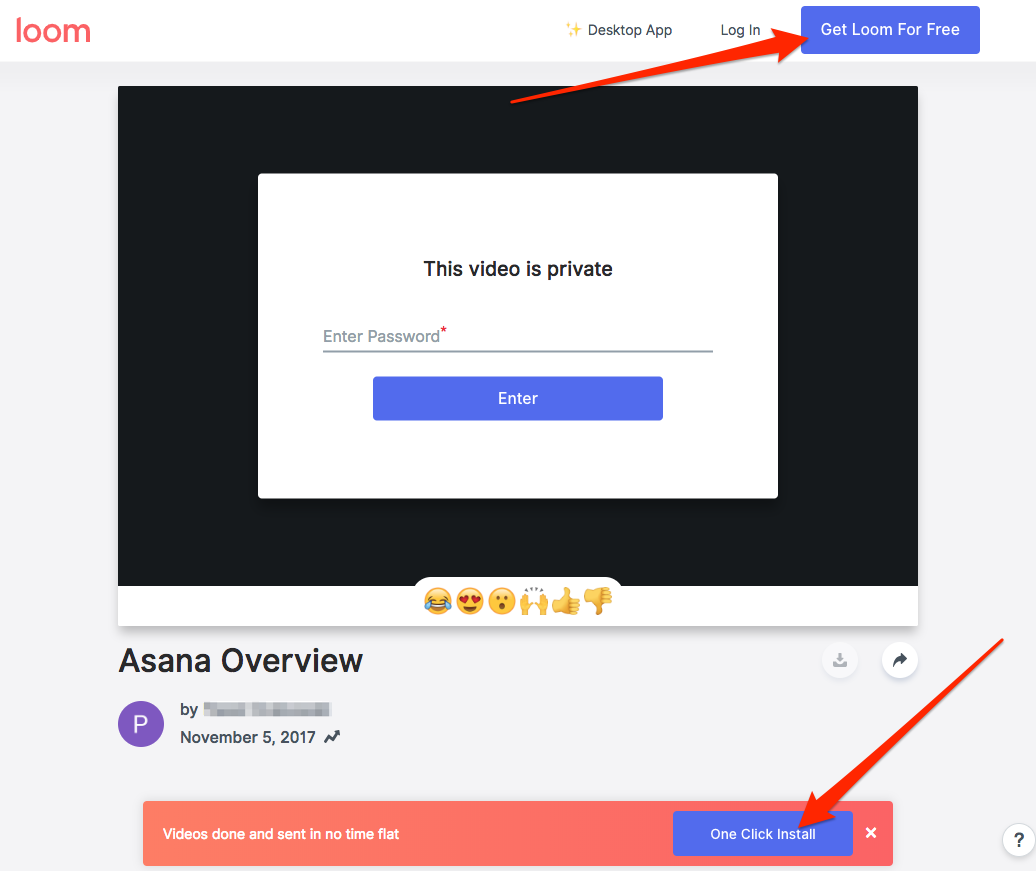
Note the two Calls to Action the company places there. Both entice them to pick the product up as well.
What’s more, video recipients also see the outcome of using the product – the video clip itself. And in turn, recognize the benefits Loom delivers, without the company having to communicate that in marketing.
Loom’s viral strategy is one of two types of virality promotions companies use.
Loom uses what’s known as distribution virality. The other type is called pull virality.
Let’s go through them in turn.
The Distribution Virality Model
Distribution virality happens when users spread the word on a product by sharing the outcome of using it.
In Loom’s case, they share a video that exposes the other person to the product.
Anyone sending an Ecard product shares the information about the product they’ve used to create it with as well.
Recipients of the below card (sent via JibJab), for example, see a small call to action at the bottom of the card.
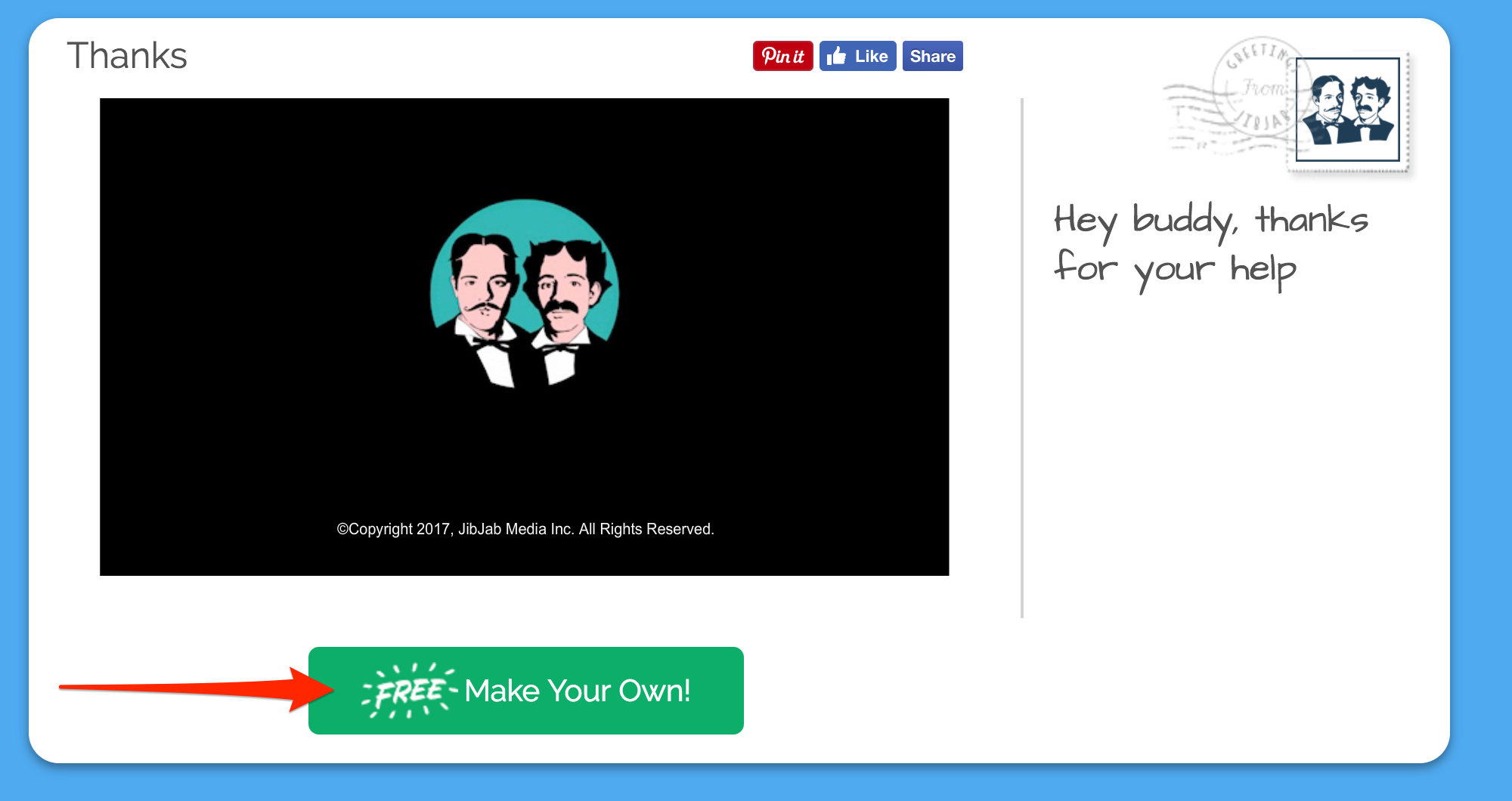
It prompts recipients delighted by the card they’ve just received to try out the service as well.
And it works.
The person has already seen the outcome of using the company’s product at work, after all. They’ve received the card. Most likely, it has made them feel good. In fact, they might feel happy or overjoyed having received it.
The Pull Virality Model
The pull virality works in the opposite way. Instead of boosting growth by sharing the product’s outcome, this model relies on existing users to invite new people to the product, to use it together.
In this model, therefore, the virality relies on new users being exposed to the value of a product by using it with others.
Slack incorporates this model in their growth perfectly. The company offers a communications platform for teams. It allows them to collaborate on projects, socialize online, and stay in touch, even if working remotely.
And although at first, it might seem that the product’s viral capability focuses on spreading the product internally only, it can boost a huge viral growth outside too.
Because of the ability to invite external users to their Slack channels – clients, contractors, etc. –companies expose the product to more users. These people learn about the product by being invited (or being pulled) into using it.
Because of this, they experience it, see its benefits too. And in turn, become more likely to implement it in their organizations too.
Another example, Nextdoor.
This private social network for neighborhoods thrives on users inviting other people to use it together. Users come together to keep up to date on recent developments in their area, learn about any upcoming get-togethers, or find a helping hand with an urgent home project.
But Nextdoor can thrive only if users invite more people from their neighborhoods to the platform. In short, it needs virality to grow.
To do so, the company offers various ways for users to connect to the people around them:
- Sending a physical postcard to their neighbors. Useful for when a person doesn’t have those people’s emails.
- Email invitations to friends and neighbors.
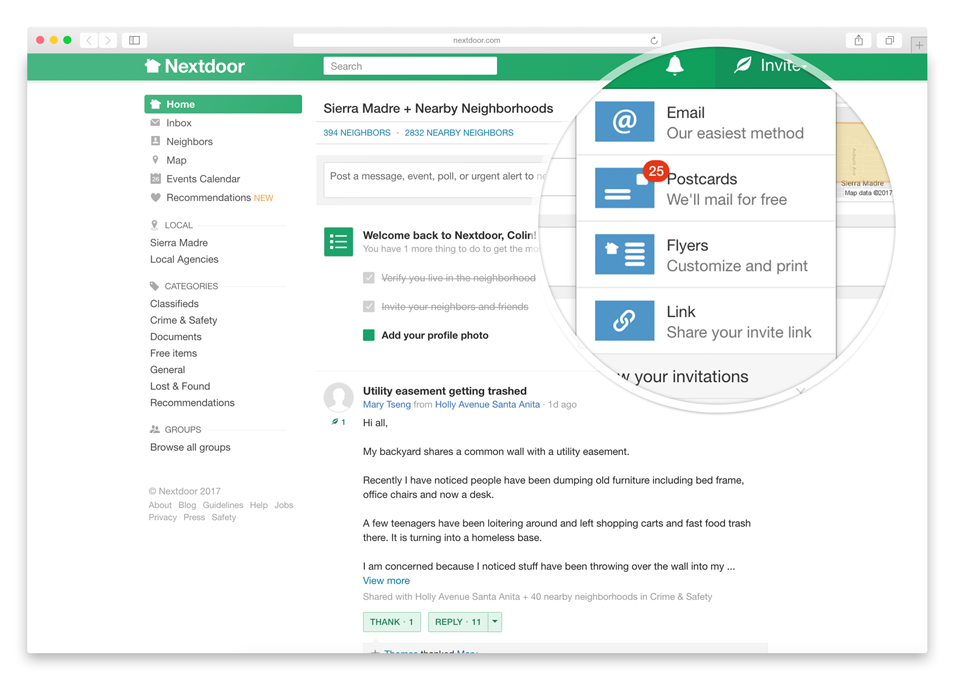
Nextdoor’s viral strategy relies on users inviting strangers around them to turn the platform into a community.
In doing so, users show their neighbors the value of the product right away. And in turn, convince them to start using it, retaining them as full users.
Which brings us to this…
What Makes a Viral Product? What are the Main Characteristics of a Viral Product?
If you look at the above examples in detail, you’ll notice a common characteristic that defines their virality.
Regardless of what type of virality these products use, it is embedded in their business operations deeply.
Their virality doesn’t seem like something they’ve added on at a later stage. Instead, they carefully built it into their products from the start.
Based on this fact alone, we can identify the main characteristics of a viral product:
Characteristic #1. A viral product requires users to interact with others to deliver the value.
Viral products cannot be designed for isolated use. Instead, their value must depend on some form of interactions between users or other shareholders.
For Loom or JibJab to deliver the value, users must share what they’ve created with others. For Nextdoor, they must use the product with others.
#2. Viral products require users to have connections around the use case.
A viral product’s users must have a sufficient number of connections to recruit to use the product. What’s more, these connections must share the interest and the desire to achieve the value the product promises to boost its virality.
JibJab users send cards to friends, family, coworkers. These people are likely to reciprocate or want to send messages to people in their networks.
Slack brings professionals together around the common use case – easier communications. And so, its ideal users are the people with sufficient internal and external networks to invite to the app.
#3. Viral product benefits from the user’s existing connections
Finally, virality relies on a person having an extensive network of connections. Even for Nextdoor, a product that connects neighbors who, potentially, don’t know each other, the connection is living in the same area.
Learn how to make your products go viral with an optimised sharing interface,
How to Build Virality into a Product – The Four Factors to Consider
We’ve already established the need to include virality at the core of a product. So now, let’s discuss factors you must consider when doing so.
And in short, you need to answer four questions:
- Why would someone send an information about your product?
- What would they be sending?
- What would entice them to do so?
- How what they’re sending would inspire others to try out your product?
Let’s go through them in turn.
Factor #1. Why Would Someone Send Information About Your Product?
For Loom or JibJab the answer is simple. Users share what they’ve created with the product. In fact, such sharing is inherent in product usage.
The whole purpose of recording a Loom clip is to explain something to others, after all. And that’s impossible to do without sharing the video with them, right?
The goal of creating an Ecard is sending a message to someone. It could be a thank you note, an invitation or anything else, really. What’s important is that the only way they’d receive the message is if you send it to them first.
But the situation might be different for other product types.
A single person could use a marketing analytics platform, for example. They wouldn’t have to build a network or rely on their existing connections to succeed with the product.
They’d just need to import all the data they need and use it to inform their strategies.
So, how do you make them meet the virality requirements we discussed in the section above?
I admit, for some products, achieving virality might prove impossible. They rely on an isolated use and output nothing that a user could share with others.
But for many others, many opportunities exist to build a network around the use case.
For a marketing platform, it could be reporting across the organization and beyond. Other project shareholders, external vendors, contractors, and clients could form a sufficient use-case network to allow the company to grow through virality.
Including the product’s brand on reports could provide the pull necessary to boost viral growth.
Intercom, for example, attributes a lot of their phenomenal growth to this strategy.

And all they’ve done, really, was including a link to their product in the little chat widget users placed on their sites.
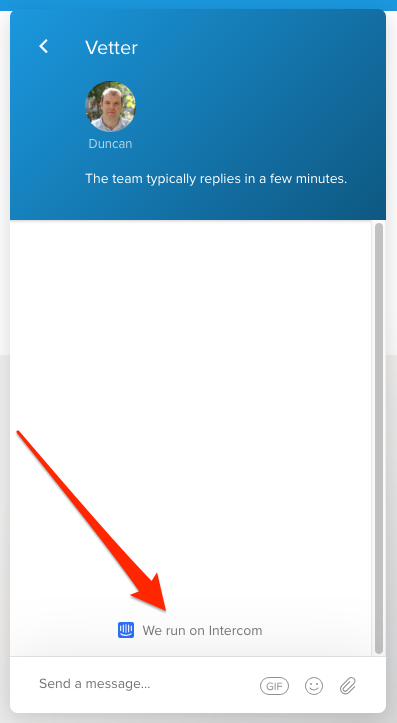
TripAdvisor, a travel review site, created a rating system and badges hospitality companies could place on their websites to boost social proof.
The result, raising an interest in TripAdvisor among their visitors.
Factor #2. What Would They Be Sending?
You’ve seen how Intercom and TripAdvisor ensure users see their brand already.
Here are some other examples of embedding virality:
Wordable asked users on a free plan to place a statement like “I use Wordable to import my GDocs drafts to WordPress” at the bottom of each blog post.
Many other apps include their branding on low-tier price plans, exposing their customers’ users to the product as well.

And so, the question you must ask is how users would spread the word on your product while using it?
Would they share what they’ve created with it? Invite others to use it together? Expose them to your brand in some other way?
Unfortunately, as you’ve seen from the above examples, there is no single way to do it. You must consider how people use your product. And how you could bake your brand into that experience.
Factor #3. Emotional drivers for sharing.
Once you’ve established your virality type and decided how would users spread the word on your product, you must then consider what would make them do so in the first place.
In short, what are the emotional drivers that would make them want to share it?
And these reasons could vary from boosting self-esteem (“I feel great because I sent my family a lovely Christmas card and they think highly of me now.”) to genuinely feeling good about oneself (“I raised $5,000 to help my uncle pay a medical bill.”)
Answering this question requires taking a deep look at your users to discover the psychological motives behind their actions. And then, using those to entice sharing the product with others.
Factor #4. How what they’re sending would inspire others to try out your product?
The final consideration revolves around what would make the end recipient of the viral message act on it.
Because, although a person might have seen your product or the brand, it doesn’t mean they’ll want to click on your call to action.
Many, most likely, will just ignore it. Particularly in the distribution virality model.
That’s one reason why the requirement for a network of connections around the use cases is so critical to viral success.
The people who receive the information about your brand must have at least some need for such a product or service. This way, they’ll be able to understand its value right away.
Closing Thoughts: 4 Things to Remember When Building Virality into a Product
You’ve learned quite a lot about building virality into a product. You’ve discovered how such virality works, what characteristics make a product viral-worthy, and what you must consider when embedding a viral strategy.
And to close it off, I want to remind you of the four most critical things to remember about virality.
First, virality is not a feature but a business principle. You cannot add it as an afterthought. However, you could embed it in your product later. To do so, though, you might have to amend your business model and the product design.
Second, in virality, users’ needs must come first. Your goal for a viral strategy is clear. You want more growth. And you want users to fuel it. Simply.
But for the strategy to work, it must deliver on the users’ needs first. So, first of all, deeply and subtly embed your virality into the user experience. Most customers shouldn’t even realize that they fuel your growth engine.
Secondly, it must deliver on their emotional needs to share your product with others. And again, you must design it in a way that they don’t realize it.
Three, virality must integrate channels the audience uses already, not the ones you’d like them to use. Otherwise, you’ll make the task too complex to complete.
And finally, it must provide a seamless sharing experience. It should never interrupt the person’s actions or make them perform any unnecessary actions.
Take sharing via email, for example. If your customer has to switch between their Gmail tab and your product to copy and paste emails of the people they want to send what they created with the product, it becomes cumbersome. So, unless it’s critical that they do so, they won’t.
But if they can natively access and import their address books in your app, nothing stands between them and completing the task.
If you’d like to see how Nextdoor uses CloudSponge to achieve this, jump to 3m30s in the video below.
Get started on your journey to make your products go viral!
Download our Better Sharing Workbook!
(it's quick, easy and absolutely free!)
Start Building Virality into Your Product Today
Now that you understand the ins and outs of virality, it’s time to put this knowledge into practice.
And we want to help you with that.
That’s why we offer a 14-day free trial of CloudSponge. It gives you full access to our APIs so that you can start building virality into your product today.
Please see our online page here to get started.



